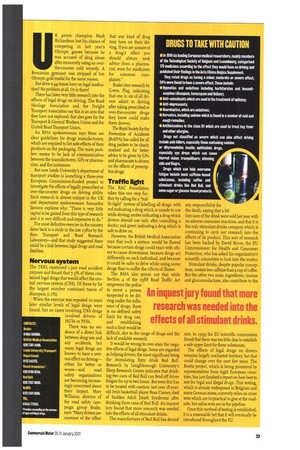DRUGS TO TAKE WITH CAUTION
Page 35

If you've noticed an error in this article please click here to report it so we can fix it.
• In 1999 six leading European medical researchers, mainly members of the Toxicological Society of Belgium and Luxembourg, categorised 179 medicines according to the effect they would have on driving and published their findings in the Acta Clinica Belgica Supplement.
They rated drugs as having a minor, moderate or severe effect; 24% were found to have a severe effect. These include; • Hypnotics and sedatives including barbiturates and benzodiazepines (diazepam, temezepam and Valium); • Anti-convulsants which are used in the treatment of epilepsy; • Anti-depressants; • Neuroleptics, which are sedatives; • Narcotics, including codeine which is found in a number of cold and cough remedies; • Antihistamines in the class H1 which are used to treat hay fever and other allergies.
Drugs not classified as severe which can also affect driving include pain killers, especially those containing codeine or dihyrocodeine; insulin; ophthalmic drugs, especially eye drops which can cause blurred vision; tranquillisers; slimming aids and Viagra.
Drugs which can help overcome fatigue include most caffeine-based substances, including coffee and stimulant drinks like Red Bull, and some sugar or glucose-based products.




































































































































































































